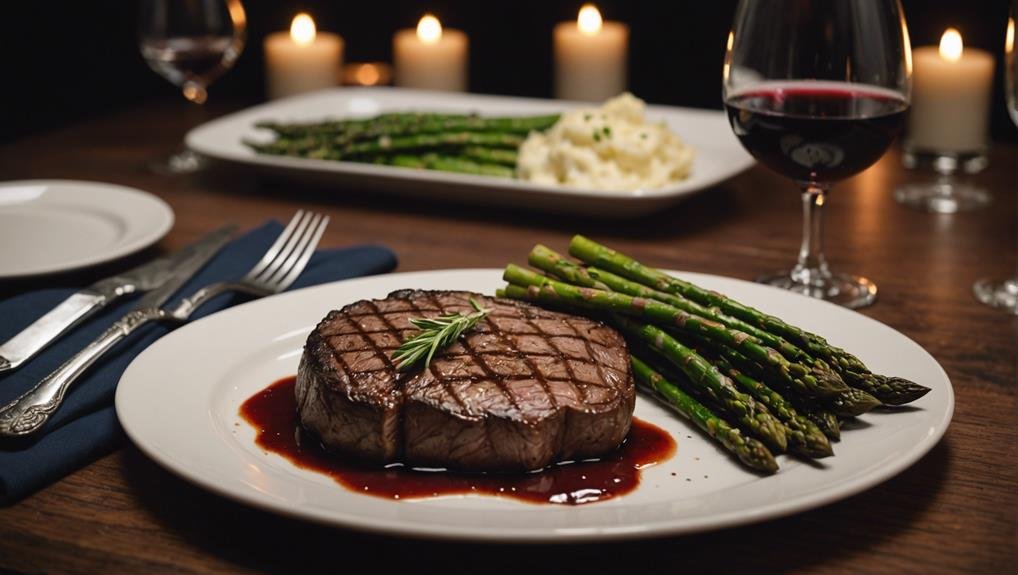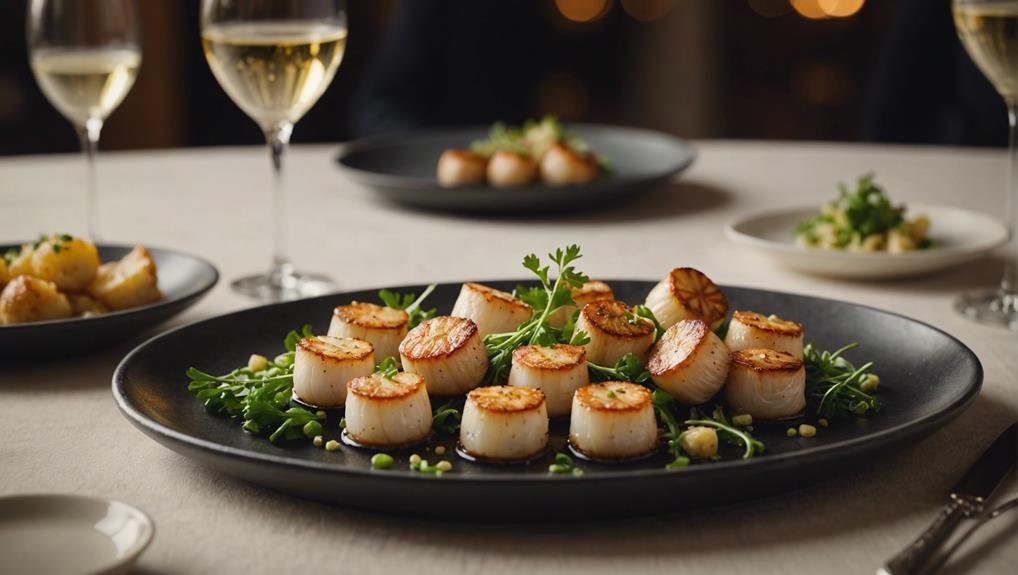When it comes to pairing food and wine, the magic happens when flavors and aromas come together in perfect harmony. This delightful combination can transform a simple meal into an extraordinary culinary experience, creating a symphony of taste sensations on your palate.
By understanding the nuances of how different foods and wines interact, you can unlock a world of gastronomic delights that will tantalize your senses and leave you with unforgettable memories.
So, next time you sit down to dine, consider the art of pairing food and wine to elevate your meal to new heights of enjoyment.
Fundamentals of Food and Wine Pairing

When it comes to pairing food and wine, it's crucial to understand how to match the components of a dish with the characteristics of the wine to enhance your dining experience. The key is to ensure that the wine complements and elevates the flavors of the food without overpowering them. This balance involves considering factors like acidity, sweetness, and the intensity of both the food and wine.
For example, a bold red wine can harmonize perfectly with a rich, fatty meat dish, creating a delightful blend of flavors. By mastering these basics, you can create pairings that either complement or contrast, adding an extra dimension to your meal. Understanding these fundamentals will help you unlock the full potential of food and wine pairing, allowing you to savor the experience to the fullest.
Understanding Taste Components
When it comes to pairing food and wine, understanding taste components is essential. There are six primary components to consider: salt, acid, sweet, bitter, fat, and spice.
While wine may not have fatness, spiciness, or saltiness, it does offer acidity and sweetness, which are crucial for pairing. By simplifying dishes based on dominant tastes and identifying primary components, you can better grasp how flavors interact.
It's also important to assess the intensity of both food and wine, such as Sauvignon Blanc, Chardonnay, Pinot Noir, and Cabernet Sauvignon, to achieve a balanced pairing. This knowledge forms the basis for creating both contrasting and complementary pairings that enhance the dining experience.
Achieving Perfect Pairings

When aiming to create the perfect harmony between food and wine pairings, it is crucial to consider how the different components of the dish interact with the characteristics of the wine. Factors like acidity, sweetness, and intensity in both the food and the wine play a vital role in crafting a complementary combination that enhances the overall dining experience.
Choosing the right wine to pair with a dish involves matching the dominant flavors in the food with suitable wine attributes. Whether you prefer a pairing that amplifies shared flavor profiles or one that balances contrasting tastes, understanding how these elements work together on the palate is key.
Frequently Asked Questions
How Can I Pair Wine With Spicy Foods Effectively?
When pairing wine with spicy dishes, it's best to choose wines with lower alcohol levels to balance out the heat. Look for wines that are slightly sweet or have fruity undertones to complement the spiciness of the food. Consider trying an off-dry Riesling or a fruity Zinfandel for a delightful pairing that enhances the overall dining experience.
Are There Any Guidelines for Pairing Wine With Vegetarian Dishes?
When pairing wine with vegetarian dishes, it's essential to consider the flavors and textures of the food. Opt for wines that complement the natural sweetness and acidity of vegetables. Light-to-medium-bodied white wines like Sauvignon Blanc or vibrant red wines like Pinot Noir can create a harmonious pairing that enhances the dining experience.
Can I Pair Dessert Wines With Savory Courses?
Dessert wines can enhance the dining experience by pairing well with savory dishes. The sweetness of these wines can nicely balance the flavors of savory courses, creating a unique and enjoyable combination. It is important to consider the intensity of both the dessert wine and the savory dish to ensure a harmonious pairing that elevates the overall taste experience.
What Are Some Tips for Pairing Wine With Exotic Cuisines?
Pairing wine with exotic cuisines is all about finding the perfect balance of flavors. When choosing a wine, consider the main tastes in the dish and how they interact with the wine. It's essential to think about the intensity of both the food and the wine to create a harmonious dining experience. Don't be afraid to try out different styles of wine with a variety of exotic cuisines to discover new and exciting combinations that elevate your meal to the next level.
How Do I Choose the Right Wine for a Cheese Platter?
When you're picking wine for a cheese platter, think about the intensity of the cheese's flavor. Choose a white wine such as Chardonnay for milder cheeses and a red wine like Cabernet Sauvignon for stronger cheeses. Finding the right balance is key to creating a well-matched pairing that enhances the flavors of both the wine and the cheese.
Conclusion
In summary, becoming skilled at pairing food and wine involves finding a perfect balance of flavors and understanding taste elements well. By considering acidity, sweetness, and intensity, you can create delightful pairings that enhance the dining experience.
Remember, the goal is to enhance the food without overpowering it. So, next time you sit down to enjoy a meal, take a moment to savor the delightful interplay of flavors on your palate. Here's to finding the ideal match!